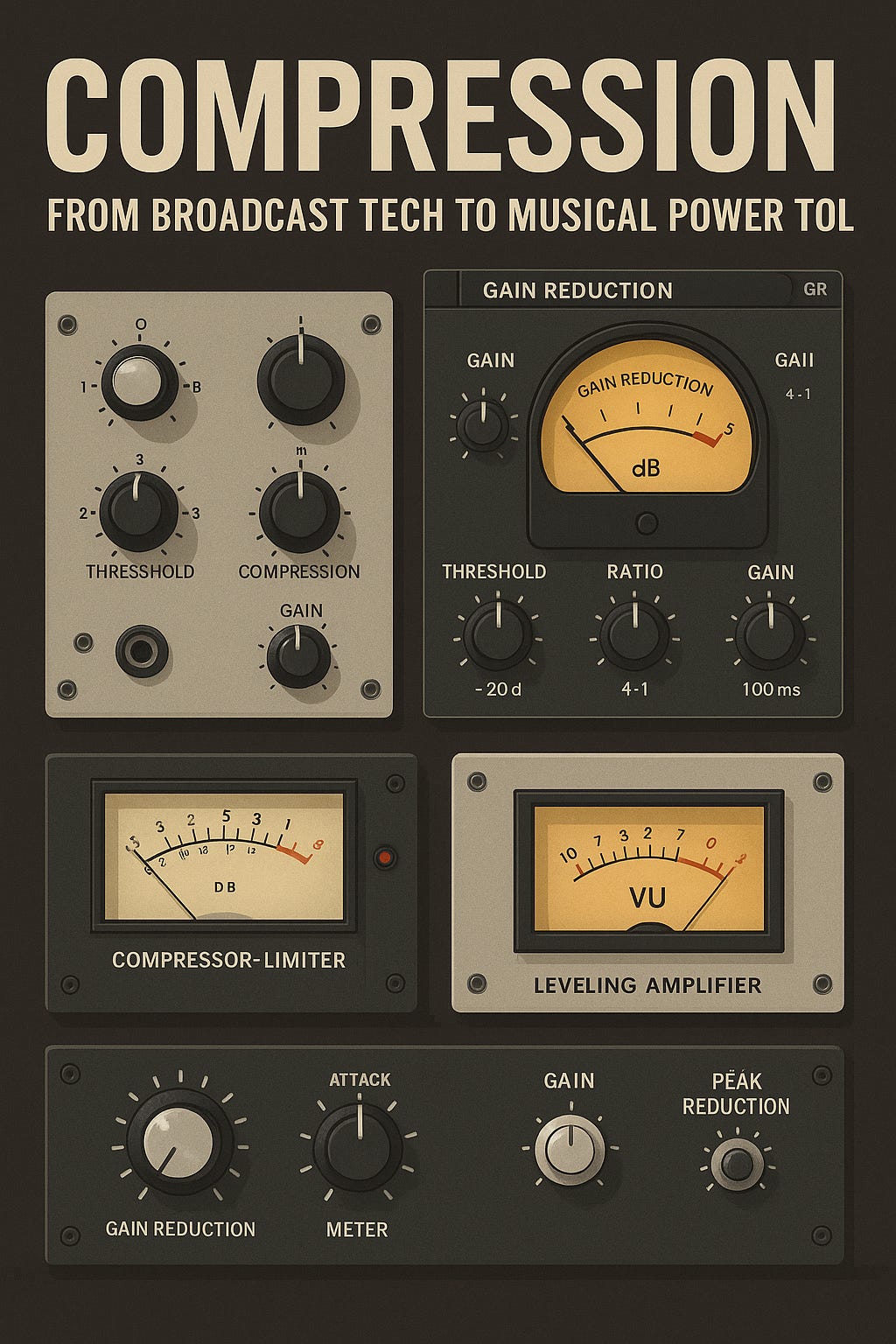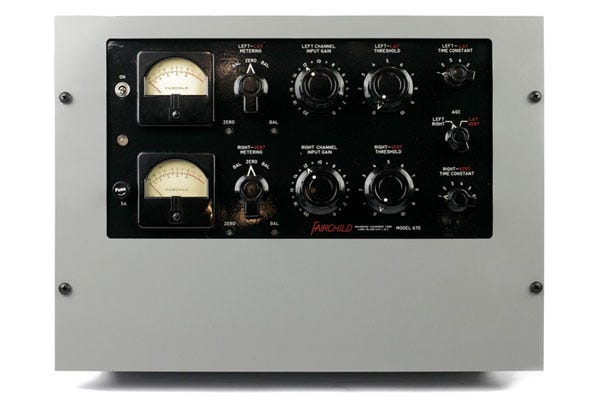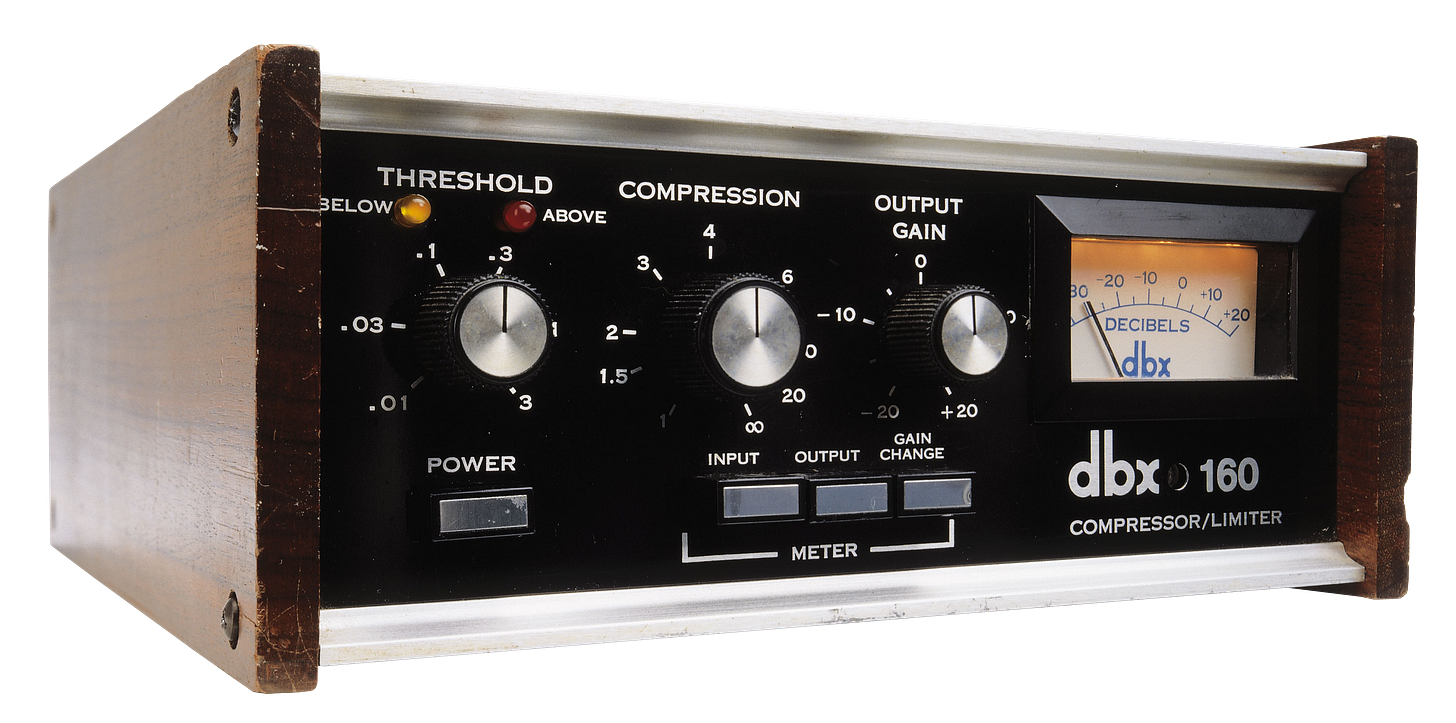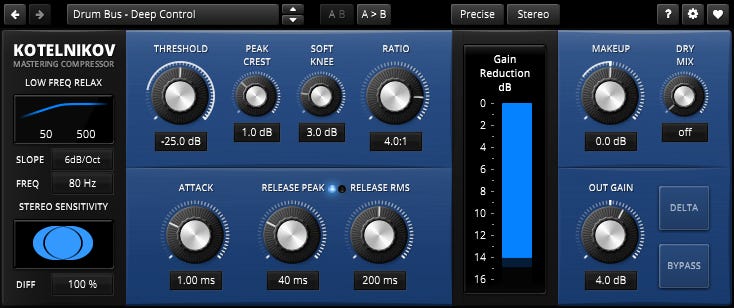Compression – From Broadcast Tech to Musical Power Tool
History, How to Use It, Plugins, & Creative Tricks
The Origins of Compression
Compression started as a technical solution, not a musical one.
1930s–1940s: Developed for radio broadcasting to control loud peaks that could cause distortion and damage transmission equipment.
Key Innovators:
Western Electric and RCA led early development of compressors like the RCA BA-6A, a tube-driven variable-mu compressor.
These compressors were large, expensive, and designed to even out volume on vocals and complete mixes.
Compression Enters the Studio
By the 1950s–60s, studios began using compression creatively:
Tube (Variable-Mu) RCA BA-6A, Fairchild 660 Warm, slow, smooth
Optical: Teletronix LA-2ASmooth, musical compression (good for vocals)
FET: UREI 1176 (1968) Fast, punchy, aggressive
VCA: dbx 160 (1970s) Precise, clean, used on drums & mix bus
Compression was now shaping the feel and emotion of recorded music.
Compression Goes Mainstream
Broadcasting:
TV & Radio used compression to keep everything consistent, especially ads, interviews, and music.
Early compressors were designed to make everything loud and smooth without shocking jumps in volume.
In Music:
By the 1970s, compression was everywhere: in rock, soul, reggae, disco, and later hip-hop and pop.
Reggae pioneers like King Tubby, Lee Perry, and later Sly & Robbie used compression not just for control, but as an effect: squashing drums, pushing reverb tails, and adding weight to bass.
Creative Compression Tricks
1. Parallel Compression (a.k.a. New York Compression)
Blend the dry signal with the heavily compressed version.
Keeps dynamics but adds thickness and energy.
Great for vocals, drums, and bass.
2. Over-Compression
Slam with a high ratio and fast attack/release.
Gives you gritty, crunchy drums or distorted vocals.
Used in dub, lo-fi, hip-hop, and sound design.
3. Sidechain Compression
One sound (e.g., kick) triggers compression on another (e.g., bass or pad).
Creates a pumping effect or clears low-end mud.
A must for reggae, dub, and EDM.
4. Serial Compression
Use multiple compressors in a row with light settings.
Results in smooth, transparent control.
Common for vocals and mastering.
5. Room Mic Crushing
Use a separate drum room mic and crush it.
Blend it with the clean drum kit for explosive energy.
Why Use Compression?
Controls volume spikes
Adds punch and presence
Glues instruments together
Makes mixes sound modern and professional
Without it, many modern mixes would sound flat or chaotic.
My Take
As Pablo Moses said, “Dubbing Is A Must.” The same goes for compression - it’s a must.
I’ll always use compression to varying degrees on bass, snare, kick, vocals, background vocals, and sometimes guitar skanks or riffs. Avoid using it on hi-hats, as you want that volume variability; it adds depth and dimension.
Avoid: The outcome of your mix ultimately depends on the end result, what you hear in your head, and how you want it to sound. However, here are a few tips: use minimal compression on horns to allow them to breathe and have a fairly broad range. If there’s a horn track that’s all over, then try using light compression with a limiter to help control it.
Vocals - again, same as above. Try to use compression more as a “glue” to help provide some volume consistency without hearing it.
Percussion - most are relatively consistent in volume. If there are any wild, dynamic swings that you’re looking to tame, opt for a limiter.
FREE PLUGIN
TDR Kotelnikov
TDR Kotelnikov is a wideband dynamics processor combining high fidelity dynamic range control with deep musical flexibility. As a descendant of the venerable TDR Feedback Compressor product family, Kotelnikov has directly inherited several unique features such as a proven control scheme, individual release control for peak and RMS content, an intuitive user interface, and powerful, state of the art, high-precision algorithms.
Mac & Window
👉 Download
PAID PLUGIN (Windows / Mac)
Waves CLA-2A Compressor / Limiter
The CLA-2A models what may be the most coveted and popular hardware compressor/limiter ever made. A favorite of studio engineers everywhere, this studio mainstay has graced countless vocal, bass, guitar, and other instrument tracks for over half a century with its alluring, warm sound.
👉 Download
FabFilter Pro • C2
FabFilter Pro-C 2 is a high-quality compressor plug-in for the most demanding engineers. Whether you need subtle mastering compression, an upfront lead vocal, that magic drum glue or deep EDM pumping: Pro-C 2 gets the job done with style
👉 Download






We use CLA on everything!